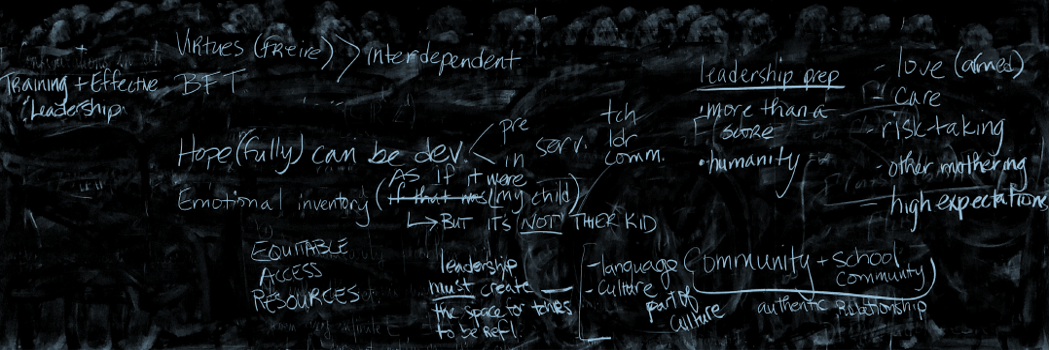While reading this week’s articles, I kept thinking about my high school principal who I spoke to when I went to visit my high school after graduating. I met with the principal, a white male, in efforts to actually share/propose a culturally responsive social emotional curriculum that I had been facilitating in 7th grade classrooms. I remember very clearly his response: “I am so surprised by how you can stand to work in New York City public school classroom, no one could pay me any amount of money to step into a New York City public school” (I chose to not speak with this person after this conversation). This principal had recently become the principal of my public high school in Cincinnati, Ohio and had previously spent 5 years being a principal in a New York City private school. I read each of these articles in stark contrast to the white male principals I had all through my K-12 schooling.
In discussing ethno-humanist leadership, Lomotey (1993) discusses the compassion that Ms. Scarlet, an African American principal, exhibited through her statements through the “we” pronoun: “we have lost that with our kids, we don’t know how to deal with adversity, we don’t know how to be adults”. She places herself within the communal responsibility of caring, CRITICALLY caring, for our children, our students. She also voices concern of her teachers, more so than her students, as their buy in to a project of anti-racism is incredibly important in reaching students. This tension was extended and described in each of the other articles this week. Tillman (2004) reflects on the displacement of Black principals, and of course their associated notions of critical care, post Brown v Board. Something that stood out to me in Hosford et al. (2011) is the discussion of anti-racist pedagogy (as opposed to culturally relevant teaching) was too explicit and could turn teachers away from the important work as words like “race” and “racism” are too “intimidating”. Making anti-racism palatable to white people should be the last of worries, honestly. But then I think about how somehow they have still colonized/co-opted anti-racist work to steer away from its foundational goals directed to call out, resist, and change Anti-Black racism embedded in schooling and education. Khalifa et al., 2016 also highlight the importance of teacher preparation for culturally responsive school leadership, but also note the equal importance of teachers actually wanting to position themselves as culturally responsive. All of what I am reading about school leadership this week, takes me back to a question from last week of can a humanizing, anti-racist position rooted in empathy and critical care, really be taught? Last week in a breakout session, I shared that from my psychological background, I would say no. Empathy and Care are innate human psychological capacities (evidenced through numerous studies with babies of all socioeconomic and racial backgrounds and assigned genders, e.g. Still Face Baby Experiment, Tronick, 1975). But psychological literature also shows that it is truly our horrific dehumanizing white supremacist, capitalist, patriarchal culture that steers us away from our innate human tendencies, and those with power are the most separated from our core human desires and capacities (such as care, empathy, community, emotions, etc.). So my question now becomes how do we reignite this innate empathy and care, that as humans we all hold, in those who have become distanced from their natural capacities? How must we not simply rely on the radical care of individuals, often Black women, to facilitate this process of resistance for other teachers?


